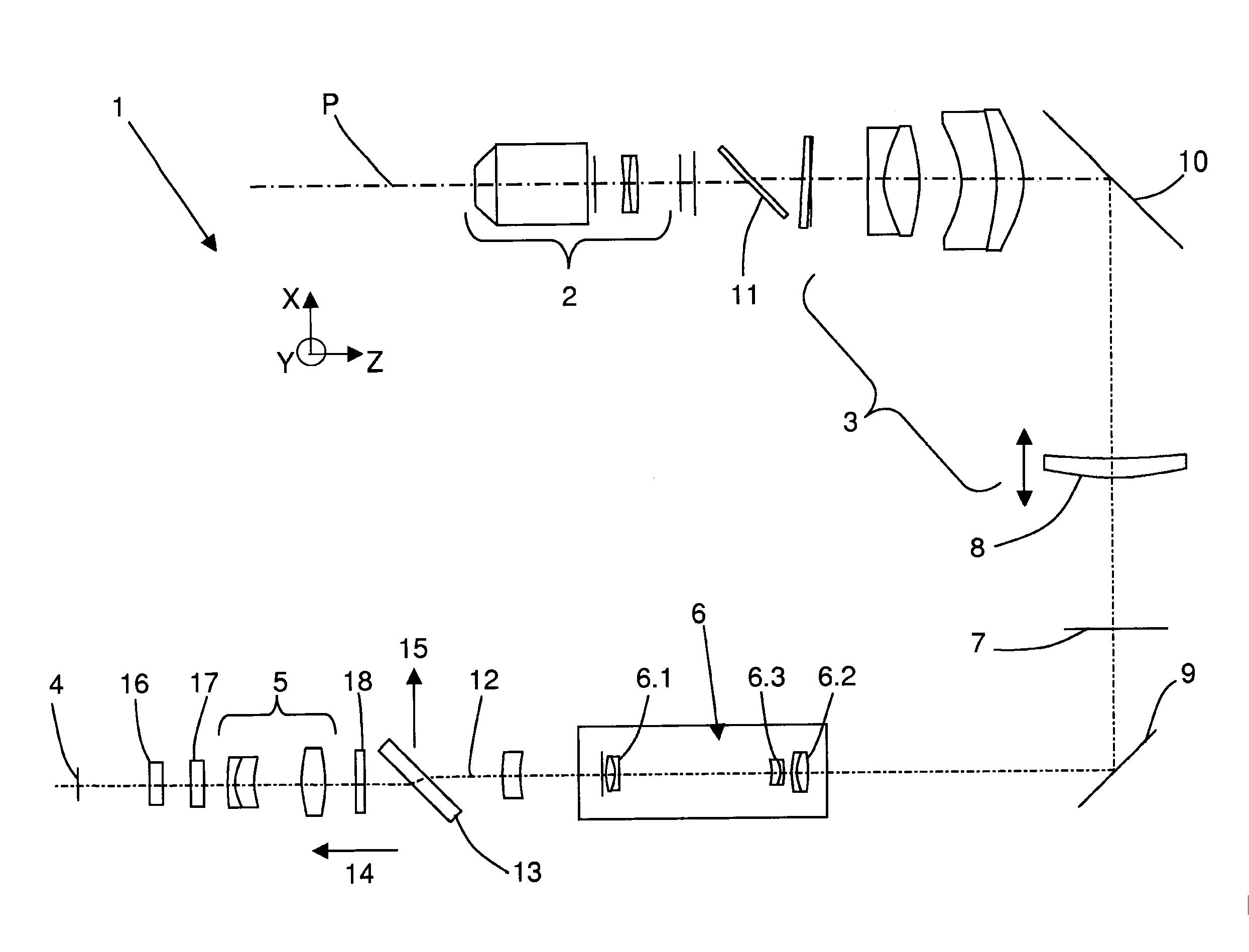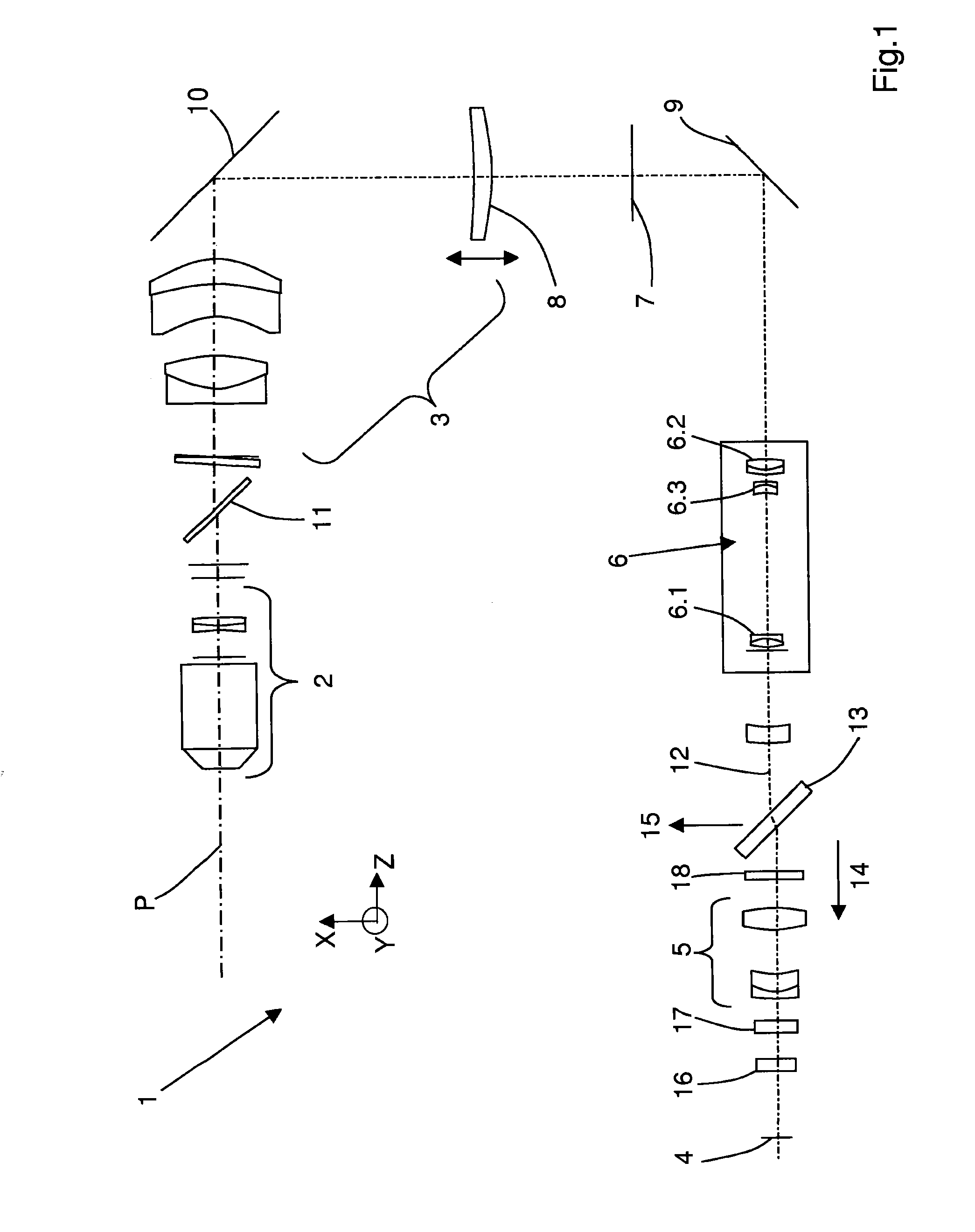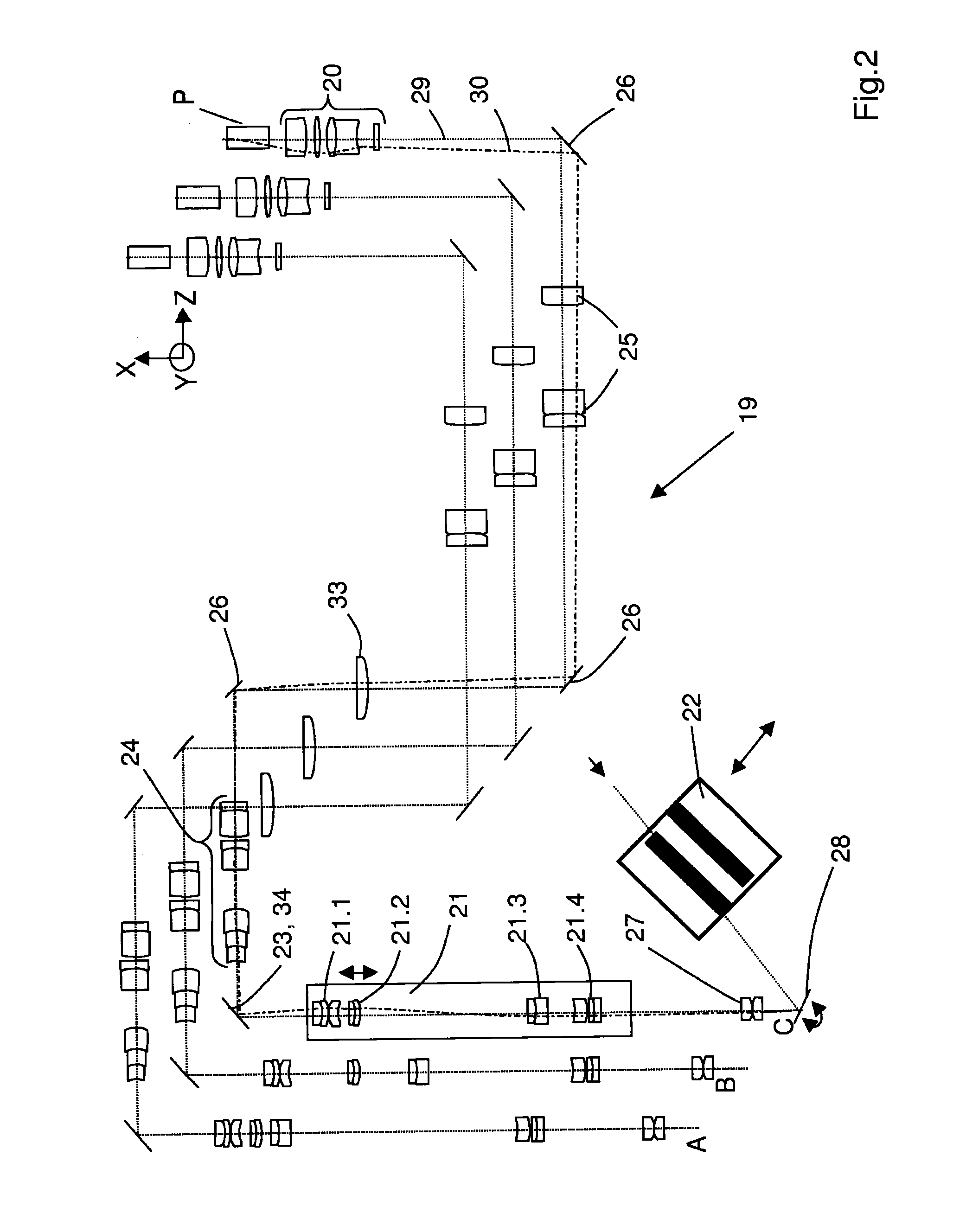Microscope with a sheet of light
a microscope and light technology, applied in the field of microscopes, can solve the problems of limiting the use of spim technology in the commercial, affecting the quality of the image field,
- Summary
- Abstract
- Description
- Claims
- Application Information
AI Technical Summary
Benefits of technology
Problems solved by technology
Method used
Image
Examples
Embodiment Construction
[0063]FIG. 1 shows a detection beam path of a microscope operating by the principle of SPIM technology. Pertaining to it, though not shown in FIG. 1, is an illumination device of the microscope, with which a light sheet for illuminating a sample region P is generated. In the direction of an illumination axis X of an illumination beam path and in the direction of a transverse axis Y lying across the illumination axis X, the light sheet has an approximately planar form. Shown along the detection beam path are elements of a detection device 1 used to detect light that is radiated by the sample region P along a detection axis Z. The illumination axis X and the detection axis Z are approximately perpendicular to each other, as are the transverse axis Y and the detection axis Z.
[0064]The detection device 1 comprises a detection objective 2 arranged in the detection beam path. Other essential elements in the detection beam path 1 are a tube lens unit 3 and a spatially resolving array detec...
PUM
 Login to View More
Login to View More Abstract
Description
Claims
Application Information
 Login to View More
Login to View More - R&D
- Intellectual Property
- Life Sciences
- Materials
- Tech Scout
- Unparalleled Data Quality
- Higher Quality Content
- 60% Fewer Hallucinations
Browse by: Latest US Patents, China's latest patents, Technical Efficacy Thesaurus, Application Domain, Technology Topic, Popular Technical Reports.
© 2025 PatSnap. All rights reserved.Legal|Privacy policy|Modern Slavery Act Transparency Statement|Sitemap|About US| Contact US: help@patsnap.com



